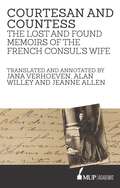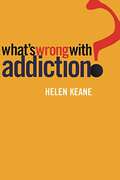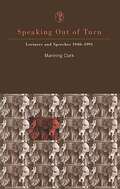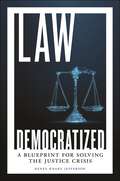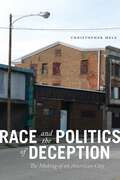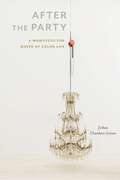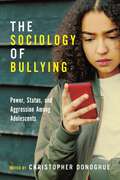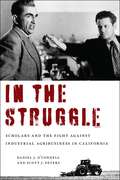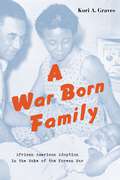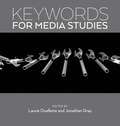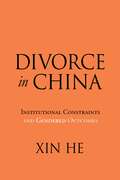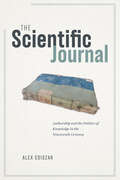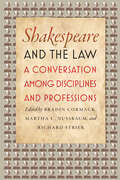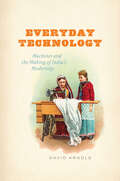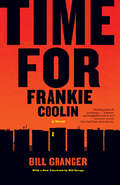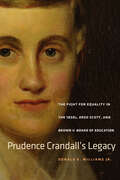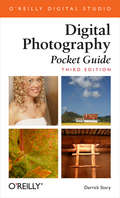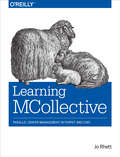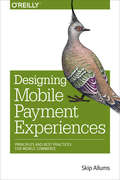- Table View
- List View
Courtesan and Countess: The Lost and Found Memoirs of the French Consul's Wife
by Jeanne Allen Jana Verhoeven Alan WilleyC�leste de Chabrillan, former courtesan and widow of the first French Consul to Melbourne, became the most prolific female stage writer in nineteenth-century France. Forever haunted by her scandalous past, C�leste fought to hold her place in an artistic world dominated by men. Courtesan and Countess tells the story not only of her struggle as a creative artist to survive and earn a living, but also of her fascinating life at the centre of the bohemian circles of Paris, surrounded by friends such as Alexandre Dumas p�re, Georges Bizet and Prince Napol�on. Courtesan and Countess paints a portrait of a remarkable woman and of the turbulent world of Paris during the Belle Epoque. Lost for more than eighty years until discovered by the authors in the attic of a French country manor, these are the unpublished and final set of memoirs from C�leste de Chabrillan.
What's Wrong With Addiction
by Helen KeaneThis is an impressive work: carefully structured, researched and written . . . a refreshingly lucid account that is both intellectually stimulating and professionally helpful.-Janet McCalman Addicts are generally regarded with either pity or grave disapproval. But is being addicted to something necessarily bad? These attitudes are explicit both in contemporary medical literature and in popular, self-help texts. We categorise addiction as unnatural, diseased and self-destructive. We demonise pleasure and desire, and view the addict as physically and morally damaged. Helen Keane's thought-provoking text examines these assumptions in a new light. In asserting that the 'wrongness' of addiction is not fixed or indeed obvious, she presents a refreshing challenge to more conventional accounts of addiction. She also investigates the notion that people can be addicted to eating, love and sex, just as they are to drugs and alcohol. What's Wrong with Addiction? shows that most of our ideas about addiction take certain ideals of health and normality for granted. It exposes strains in our society's oppositions between health and disease, between the natural and the artificial, between order and disorder, and between self and other.
France And Botany Bay: The Lure of a Penal Colony
by Colin ForsterConvict transportation to Britain's colonies in Australia greatly influenced political debate and policy in France. Surprisingly, it's a story that has not previously been told. Depiction of Botany Bay as a moral and economic utopia, and the answer to crime, was the basis of vigorous support for the establishment of a French penal colony. Implacably opposed to transportation were those who saw Botany Bay as a penal disaster. The opposing groups amassed a vast array of material. Debate raged. There were floods of impassioned literature. French ships roamed the world in search of an attractive and viable site for their own Botany Bay, and France came close to settling south-west Australia and New Zealand. In the end, the transportationists won. In 1852 France began transportation to French Guiana and in 1863 to New Caledonia. For both settlements, Botany Bay was the model. Colin Forster tells this fascinating story for the first time.
Challenging Identities: Muslim Women in Australia (Islamic Studies Series)
by Shahram AkbarzadehMuslim women in Australia are at the forefront of a culture war, and not necessarily by choice. As visible representatives of Islam, veiled women face discrimination and abuse, and carry the stigma of a culture frequently deemed unacceptable and inferior. Despite these adverse conditions, Muslim women have demonstrated a remarkable resilience by maintaining their presence in the public domain and by continuing to make a positive contribution to Australia. The experiences of Muslim women in Australia cannot be typecast as a sisterhood of oppressed females. Challenging Identities questions the assumption of incompatible 'Australian values' and 'Islamic values', and provides valuable first-person accounts from the lives of Muslim women in Australia. Islamic Studies Series - Volume 5
Speaking Out Of Turn: Lectures and Speeches 1940–1991
by Manning ClarkThis fascinating book brings together forty-two selected speeches and lectures by Professor Manning Clark. They range over fifty years from 'What of Germany', delivered in 1940, to the last, delivered in 1991 just before his death at the launch of Barry Humphries' book The Life and Death of Sandy Stone and reveal recurring themes as well as developments in Clark's thinking. In one sense they are all of a piece. They reflect the values, aspirations, regrets-and laughter-of one passionate and intelligent man. In another, they change and develop during the course of that man's intellectual and emotional career. In early manhood he analysed issues and problems ruthlessly in terms of his own values. In middle life he portrayed men and women and expounded ideas from a historical perspective. Towards his end the elegiac mood prevailed and he sought-not always successfully-to speak as a 'life affirmer' and to regard all men and women and events with the 'eye of pity'.A History of Australia ,Volumes 1 & 2, Earliest Times - 1838, deals with the pre-white settlement era and the earliest years of European colonisation through to the establishment of an increasingly settled society and the expeditions of the great inland explorers.
Conversation Yearbook 2016
by John WatsonIn a year in which political discourse seemed increasingly untethered from reality, The Conversation continued to bring you analysis, commentary and research from academic experts. This clearly written collection ranges widely, from Michelle Grattan's scrupulous assessment of Malcolm Turnbull's first year as prime minister, to Amy Reichelt and Clare Collins' verdict on whether eating chocolate improves your brain function, to philosopher Patrick Stokes' thoughts on the most effective way to respond to Pauline Hanson. It demonstrates the pressing relevance of academic expertise, as well as the deep pleasure of reading people who really know what they're talking about.
Law Democratized: A Blueprint for Solving the Justice Crisis
by Renee Knake JeffersonA practical plan for providing legal help to all, regardless of resourcesMillions of people in the United States face legal problems without lawyers to help them. Why? How do we educate and inform the public about the law so they can understand when the services of a lawyer are necessary or desirable? When can individuals solve legal problems on their own or with the assistance of a specialist without a traditional law degree? In short, how do we democratize the law?Law Democratized offers a blueprint to increase legal help for everyone, regardless of their ability to pay. Building on more than a decade of research into innovation in legal services, the book advances a series of recommendations inspired by success stories from around the globe. Renee Knake Jefferson outlines different paths pursued by bar associations, courts, entrepreneurs, law schools, nonprofits, and others, evaluating the promise and pitfalls of each. She analyzes regulatory reforms employed in other nations, along with emerging efforts in a handful of US states.If the rule of law is the bedrock that American democracy rests upon, then the justice transformed system must be open and user-friendly to all. Law Democratized makes a compelling argument for transforming the American legal landscape through engaged citizenship, ethical innovation, expanded education, and regulatory reform, in order to democratize law and make legal help more accessible.
Race and the Politics of Deception: The Making of an American City
by Christopher MeleWhat is the relationship between race and space, and how do racial politics inform the organization and development of urban locales?In Race and the Politics of Deception, Christopher Mele unpacks America’s history of dealing with racial problems through the inequitable use of public space. Mele focuses on Chester, Pennsylvania—a small city comprised of primarily low-income, black residents, roughly twenty miles south of Philadelphia. Like many cities throughout the United States, Chester is experiencing post-industrial decline. A development plan touted as a way to “save” the city, proposes to turn one section into a desirable waterfront destination, while leaving the rest of the struggling residents in fractured communities. Dividing the city into spaces of tourism and consumption versus the everyday spaces of low-income residents, Mele argues, segregates the community by creating a racialized divide. While these development plans are described as socially inclusive and economically revitalizing, Mele asserts that political leaders and real estate developers intentionally exclude certain types of people—most often, low-income people of color.Race and the Politics of Deception provides a revealing look at how our ever-changing landscape is being strategically divided along lines of class and race.
After the Party: A Manifesto for Queer of Color Life (Sexual Cultures #4)
by Joshua Chambers-LetsonWinner, 2019 ATHE Outstanding Book Award, given by the Association for Theatre in Higher EducationWinner, 2018 Errol Hill Award in African American theater, drama, and/or performance studies, presented by the American Society for Theatre ResearchA new manifesto for performance studies on the art of queer of color worldmaking. After the Party tells the stories of minoritarian artists who mobilize performance to produce freedom and sustain life in the face of subordination, exploitation, and annihilation. Through the exemplary work of Nina Simone, Jorge Ignacio Cortiñas, Danh Vō, Felix Gonzalez-Torres, Eiko, and Tseng Kwong Chi, and with additional appearances by Nao Bustamante, Audre Lorde, Martin Wong, Assata Shakur, and Nona Faustine, After the Party considers performance as it is produced within and against overlapping histories of US colonialism, white supremacy, and heteropatriarchy. Building upon the thought of José Esteban Muñoz alongside prominent scholarship in queer of color critique, black studies, and Marxist aesthetic criticism, Joshua Chambers-Letson maps a portrait of performance’s capacity to produce what he calls a communism of incommensurability, a practice of being together in difference. Describing performance as a rehearsal for new ways of living together, After the Party moves between slavery, the Civil Rights Movement, the first wave of the AIDS crisis, the Vietnam War, and the catastrophe-riddled horizon of the early twenty-first century to consider this worldmaking practice as it is born of the tension between freedom and its negation. With urgency and pathos, Chambers-Letson argues that it is through minoritarian performance that we keep our dead alive and with us as we struggle to survive an increasingly precarious present.
Golem: Modern Wars and Their Monsters
by Maya Barzilai2017 Jordan Schnitzer Book Award in Jewish Literature and LinguisticsHonorable Mention, 2016 Baron Book Prize presented by AAJRA monster tour of the Golem narrative across various cultural and historical landscapesIn the 1910s and 1920s, a “golem cult” swept across Europe and the U.S., later surfacing in Israel. Why did this story of a powerful clay monster molded and animated by a rabbi to protect his community become so popular and pervasive? The golem has appeared in a remarkable range of popular media: from the Yiddish theater to American comic books, from German silent film to Quentin Tarantino movies. This book showcases how the golem was remolded, throughout the war-torn twentieth century, as a muscular protector, injured combatant, and even murderous avenger. This evolution of the golem narrative is made comprehensible by, and also helps us to better understand, one of the defining aspects of the last one hundred years: mass warfare and its ancillary technologies.In the twentieth century the golem became a figure of war. It represented the chaos of warfare, the automation of war technologies, and the devastation wrought upon soldiers’ bodies and psyches. Golem: Modern Wars and Their Monsters draws on some of the most popular and significant renditions of this story in order to unravel the paradoxical coincidence of wartime destruction and the fantasy of artificial creation. Due to its aggressive and rebellious sides, the golem became a means for reflection about how technological progress has altered human lives, as well as an avenue for experimentation with the media and art forms capable of expressing the monstrosity of war.
The Sociology of Bullying: Power, Status, and Aggression Among Adolescents (Critical Perspectives on Youth #7)
by Christopher DonoghueAn important new collection on the nature and consequences of bullying School shootings and suicides by young victims of bullying have spurred a proliferation of anti-bullying programs, yet most of the research done on school bullying has been from psychologists. The Sociology of Bullying will be the first volume to present the leading ideas in sociology about bullying among adolescents that moves beyond an individualistic approach and instead offers ideas about how to address bullying as a byproduct of social systems, biases, and status hierarchies. Sociologists investigate the impact of social forces on bullying among adolescents, such as inequality, heteronormativity, militarized capitalism, racism, cancel culture, power, and competition. Contributors explore a wide range of key topics, such as how homophobia and gender normativity encourage bullying; how anti-bullying curricula can ultimately lead to more bullying; and how adolescents use bullying against their friends to improve their own social standing. By advancing sociological perspectives on bullying, this important volume aims to shift the national conversation from one that focuses on villainizing bullies to one that encourages an inward look at the aspects of our culture that foster bullying behavior among children.
Abstractionist Aesthetics: Artistic Form and Social Critique in African American Culture (NYU Series in Social and Cultural Analysis #5)
by Phillip Brian HarperAn artistic discussion on the critical potential of African American expressive cultureIn a major reassessment of African American culture, Phillip Brian Harper intervenes in the ongoing debate about the “proper” depiction of black people. He advocates for African American aesthetic abstractionism—a representational mode whereby an artwork, rather than striving for realist verisimilitude, vigorously asserts its essentially artificial character. Maintaining that realist representation reaffirms the very social facts that it might have been understood to challenge, Harper contends that abstractionism shows up the actual constructedness of those facts, thereby subjecting them to critical scrutiny and making them amenable to transformation.Arguing against the need for “positive” representations, Abstractionist Aesthetics displaces realism as the primary mode of African American representational aesthetics, re-centers literature as a principal site of African American cultural politics, and elevates experimental prose within the domain of African American literature. Drawing on examples across a variety of artistic production, including the visual work of Fred Wilson and Kara Walker, the music of Billie Holiday and Cecil Taylor, and the prose and verse writings of Ntozake Shange, Alice Walker, and John Keene, this book poses urgent questions about how racial blackness is made to assume certain social meanings. In the process, African American aesthetics are upended, rendering abstractionism as the most powerful modality for Black representation.
In the Struggle: Scholars and the Fight against Industrial Agribusiness in California
by Daniel J. O'Connell Scott J. PetersA call to action in an ongoing battle against industrial agricultureFrom the early twentieth century and across generations to the present, In the Struggle brings together the stories of eight politically engaged scholars, documenting their opposition to industrial-scale agribusiness in California. As the narrative unfolds, their previously censored and suppressed research, together with personal accounts of intimidation and subterfuge, is introduced into the public arena for the first time. In the Struggle lays out historic, subterranean confrontations over water rights, labor organizing, and the corruption of democratic principles and public institutions. As California’s rural economy increasingly consolidates into the hands of land barons and corporations, the scholars’ work shifts from analyzing problems and formulating research methods to organizing resistance and building community power. Throughout their engagement, they face intense political blowback as powerful economic interests work to pollute and undermine scientific inquiry and the civic purposes of public universities.The findings and the pressure put upon the work of these scholars—Paul Taylor, Ernesto Galarza, and Isao Fujimoto among them—are a damning indictment of the greed and corruption that flourish under industrial-scale agriculture. After almost a century of empirical evidence and published research, a definitive finding becomes clear: land consolidation and economic monopoly are fundamentally detrimental to democracy and the well-being of rural societies.
A War Born Family: African American Adoption in the Wake of the Korean War
by Kori A. GravesThe origins of a transnational adoption strategy that secured the future for Korean-black childrenThe Korean War left hundreds of thousands of children in dire circumstances, but the first large-scale transnational adoption efforts involved the children of American soldiers and Korean women. Korean laws and traditions stipulated that citizenship and status passed from father to child, which made the children of US soldiers legally stateless. Korean-black children faced additional hardships because of Korean beliefs about racial purity, and the segregation that structured African American soldiers’ lives in the military and throughout US society. The African American families who tried to adopt Korean-black children also faced and challenged discrimination in the child welfare agencies that arranged adoptions.Drawing on extensive research in black newspapers and magazines, interviews with African American soldiers, and case notes about African American adoptive families, A War Born Family demonstrates how the Cold War and the struggle for civil rights led child welfare agencies to reevaluate African American men and women as suitable adoptive parents, advancing the cause of Korean transnational adoption.
Keywords for Media Studies (Keywords #5)
by Jonathan Gray Laurie OuelletteIntroduces key terms, research traditions, debates, and their histories, and offers a sense of the new frontiers and questions emerging in the field of media studies Keywords for Media Studies introduces and aims to advance the field of critical media studies by tracing, defining, and problematizing its established and emergent terminology. The book historicizes thinking about media and society, whether that means noting a long history of “new media,” or tracing how understandings of media “power” vary across time periods and knowledge formations. Bringing together an impressive group of established scholars from television studies, film studies, sound studies, games studies, and more, each of the 65 essays in the volume focuses on a critical concept, from “fan” to “industry,” and “celebrity” to “surveillance.” Keywords for Media Studies is an essential tool that introduces key terms, research traditions, debates, and their histories, and offers a sense of the new frontiers and questions emerging in the field of media studies. Visit keywords.nyupress.org for online essays, teaching resources, and more.
Divorce in China: Institutional Constraints and Gendered Outcomes
by Xin HeWhy are women still at a disadvantage in Chinese divorce courts?Despite the increase of gender consciousness in Chinese society and a trove of legislation to protect women, why are Chinese women still disadvantaged in divorce courts? Xin He argues that institutional constraints to which judges are subject, a factor largely ignored by existing literature, play a crucial role. Twisting the divorce law practices are the bureaucratic incentives of courts and their political concerns for social stability. Because of these concerns, judges often choose the most efficient, and safest, way to handle issues in divorce cases. In so doing, they allow the forces of inequality in social, economic, cultural, and political areas to infiltrate their decisions. Divorce requests are delayed; domestic violence is trivialized; and women’s child custody is sacrificed. The institutional failure to enforce the laws has become a major obstacle to gender justice.Divorce in China is the only study of Chinese divorce cases based on fieldwork and interviews conducted inside Chinese courtrooms over the course of a decade. With an unusual vantage point, Xin He offers a rare and unfiltered view of the operation of Chinese courts in the authoritarian regime. Through a socio-legal perspective highlighting the richness, sophistication, and cutting-edge nature of the research, Divorce in China is as much an account of Chinese courts in action as a social ethnography of China in the midst of momentous social change.
The Scientific Journal: Authorship and the Politics of Knowledge in the Nineteenth Century
by Alex CsiszarNot since the printing press has a media object been as celebrated for its role in the advancement of knowledge as the scientific journal. From open communication to peer review, the scientific journal has long been central both to the identity of academic scientists and to the public legitimacy of scientific knowledge. But that was not always the case. At the dawn of the nineteenth century, academies and societies dominated elite study of the natural world. Journals were a relatively marginal feature of this world, and sometimes even an object of outright suspicion.The Scientific Journal tells the story of how that changed. Alex Csiszar takes readers deep into nineteenth-century London and Paris, where savants struggled to reshape scientific life in the light of rapidly changing political mores and the growing importance of the press in public life. The scientific journal did not arise as a natural solution to the problem of communicating scientific discoveries. Rather, as Csiszar shows, its dominance was a hard-won compromise born of political exigencies, shifting epistemic values, intellectual property debates, and the demands of commerce. Many of the tensions and problems that plague scholarly publishing today are rooted in these tangled beginnings. As we seek to make sense of our own moment of intense experimentation in publishing platforms, peer review, and information curation, Csiszar argues powerfully that a better understanding of the journal’s past will be crucial to imagining future forms for the expression and organization of knowledge.
Hartford Seen (Hartford Books)
by Pablo DelanoHartford Seen is the first modern-day art photography book focused exclusively on Connecticut's capital city. Born and raised in Puerto Rico, Pablo Delano relocated from Manhattan to Hartford in 1996 to teach photography at Trinity College. On his daily drive to work, he was struck continually by the city's visual beauty and complexity. He left the car and began to explore, using his camera as a means of gaining a deeper understanding of what he found. In this personal meditation on Harford's built environment, Delano implements a methodical but intuitive approach, scrutinizing the layers of history embedded in the city's fabric. He documents commercial establishments, industrial sites, places of worship, and homes with a painter's eye to color and composition. His vision tends to eschew the city's better-known landmarks in favor of vernacular structures that reflect the tastes and needs of the city's diverse population at the dawn of the 21st Century. Over the last 100 years Hartford may have transformed from one of America's wealthiest cities to one of its poorest, but as suggested by Hartford Seen, today it nevertheless enjoys extraordinary cultural offerings, small entrepreneurship, and a vibrant spiritual life. The city's historical palette consists mostly of the brownstone, redbrick, and gray granite shades common in New England's older cities. Yet Delano perceives that it is also saturated with the blazing hues favored by many of its newer citizens. With more than 150 full-color images,Hartford Seen vitally expands the repertoire of photographic studies of American cities and of their contemporary built environments.
Shakespeare and the Law: A Conversation Among Disciplines and Professions
by Bradin Cormack, Martha C. Nussbaum, and Richard StrierWilliam Shakespeare is inextricably linked with the law. Legal documents make up most of the records we have of his life, and trials, lawsuits, and legal terms permeate his plays. Gathering an extraordinary team of literary and legal scholars, philosophers, and even sitting judges, Shakespeare and the Law demonstrates that Shakespeare’s thinking about legal concepts and legal practice points to a deep and sometimes vexed engagement with the law’s technical workings, its underlying premises, and its social effects. The book’s opening essays offer perspectives on law and literature that emphasize both the continuities and contrasts between the two fields. The second section considers Shakespeare’s awareness of common law thinking and common law practice, while the third inquires into Shakespeare’s general attitudes toward legal systems. The fourth part of the book looks at how law enters into conversation with issues of politics and community, whether in the plays, in Shakespeare’s world, or in our own world. Finally, a colloquy among Supreme Court Justice Stephen Breyer, Judge Richard Posner, Martha C. Nussbaum, and Richard Strier covers everything from the ghost in Hamlet to the nature of judicial discretion.
Everyday Technology: Machines and the Making of India's Modernity
by David ArnoldIn 1909 Mohandas Karamchand Gandhi, on his way back to South Africa from London, wrote his now celebrated tract Hind Swaraj, laying out his vision for the future of India and famously rejecting the technological innovations of Western civilization. Despite his protestations, Western technology endured and helped to make India one of the leading economies in our globalized world. Few would question the dominant role that technology plays in modern life, but to fully understand how India first advanced into technological modernity, argues David Arnold, we must consider the technology of the everyday. Everyday Technology is a pioneering account of how small machines and consumer goods that originated in Europe and North America became objects of everyday use in India in the late nineteenth and early twentieth centuries. Rather than investigate “big” technologies such as railways and irrigation projects, Arnold examines the assimilation and appropriation of bicycles, rice mills, sewing machines, and typewriters in India, and follows their impact on the ways in which people worked and traveled, the clothes they wore, and the kind of food they ate. But the effects of these machines were not limited to the daily rituals of Indian society, and Arnold demonstrates how such small-scale technologies became integral to new ways of thinking about class, race, and gender, as well as about the politics of colonial rule and Indian nationhood. Arnold’s fascinating book offers new perspectives on the globalization of modern technologies and shows us that to truly understand what modernity became, we need to look at the everyday experiences of people in all walks of life, taking stock of how they repurposed small technologies to reinvent their world and themselves.
Time for Frankie Coolin: A Novel
by Bill GrangerThe acclaimed journalist and author delivers “a raw and vivid slice of Chicago” in a novel that explores the changing tide of race, class and politics (The New York Times).Time for Frankie Coolin is the story of a plasterer turned landlord in Chicago who, in the late 1970s, buys abandoned buildings and makes them just habitable enough to charge minimal rent from his mostly black tenants. In this way, Frankie is able to move his family to a house in the suburbs.But Frankie’s well-ordered life comes apart when a casual favor for a cousin combined with a random act of arson set in motion a cascade of crises. Suddenly, Frankie’s up against menacing G-men and threats of prison if he doesn’t talk. But since talking has never been one of Frankie’s strengths, he copes as he always has: by trying to tough it out on his own.Time for Frankie Coolin is both a psychological thriller and a ’70s Chicago period piece that shines a surprisingly sympathetic light on the often-overlooked people who lived, worked, and died at the city’s margins. This edition includes a foreword by Bill Savage.
Prudence Crandall's Legacy: The Fight for Equality in the 1830s, Dred Scott, and Brown v. Board of Education (The Driftless Connecticut Series)
by Donald E. WilliamsThe &“compelling and lively&” story of a pioneering abolitionist schoolteacher and her far-reaching influence on civil rights and American law (Richard S. Newman, author of Freedom&’s Prophet). When Prudence Crandall, a Canterbury, Connecticut schoolteacher, accepted a black woman as a student, she unleashed a storm of controversy that catapulted her to national notoriety, and drew the attention of the most significant pro- and anti-slavery activists of the early nineteenth century. The Connecticut state legislature passed its infamous Black Law in an attempt to close down her school. Crandall was arrested and jailed—but her legal legacy had a lasting impact. Crandall v. State was the first full-throated civil rights case in U.S. history. The arguments by attorneys in Crandall played a role in two of the most fateful Supreme Court decisions, Dred Scott v. Sandford, and the landmark case of Brown v. Board of Education. In this book, author and lawyer Donald E. Williams Jr. marshals a wealth of detail concerning the life and work of Prudence Crandall, her unique role in the fight for civil rights, and her influence on legal arguments for equality in America that, in the words of Brown v. Board attorney Jack Greenberg, &“serves to remind us once more about how close in time America is to the darkest days of our history.&” &“The book offers substantive and well-rounded portraits of abolitionists, colonizationists, and opponents of black equality―portraits that really dig beneath the surface to explain the individuals&’ motivations, weaknesses, politics, and life paths.&” ―The New England Quarterly &“Taking readers from Connecticut schoolrooms to the highest court in the land, [Williams] gives us heroes and villains, triumph and tragedy, equity and injustice on the rough road to full freedom.&” —Richard S. Newman, author of Freedom&’s Prophet
Digital Photography Pocket Guide: Pocket Guide
by Derrick StoryEven film diehards have a tough time resisting the instant gratification of the digital camera. Today's digital cameras are more affordable then ever before, and they deliver high quality images that are a snap to share. Plus, you can take risks with a digital camera you never would with a film camera. You waste nothing; there's no film required, and because you only print the pictures you need, digital photography is cost effective and environmentally friendly.But to take full advantage of a digital camera, you need to be an experienced photographer and an expert at digital photography too. With more than 15 years of experience as a photojournalist, author Derrick Story brings you Digital Photography Pocket Guide, 3rd Edition. For everyone who owns or will own a digital camera (and that pretty much means everyone!), this is the perfect on-the-go guide for taking top-notch digital photos.In this third edition of the bestselling pocket guide, Story expands on the basic photography techniques that he introduced in earlier editions, including an explanation of each camera component and what it does, tips for choosing just the right settings for your needs, and much more. This indispensable guide covers everything from how to shoot sports action, close ups, and night shots, to dealing with image resolution, archiving, and memory cards.Affordable and portable, Digital Photography Pocket Guide, 3rd Edition offers full-color photographs, screen shots, and line art illustrating all the topics in the guide's three main sections ("Digital Camera Components," "Standard Camera Functions," and "How Do I?"). Contents are labeled A to Z for quick reference. There's also a comprehensive table of contents and index so you'll waste no time flipping to the specific information you need--whether you want to transfer images, make a QuickTime movie, or just figure out what purpose that mystery setting on your camera serves. There's even a section of easy-to-read reference tables for quick look-up of white balance settings, exposure compensation, camera mode explanations, and plenty more.
Learning MCollective: Parallel Server Management in Puppet and Chef
by Jo RhettOrchestrate change across server clusters in near realtime with MCollective, the framework that works in concert with Puppet, Chef, and other configuration management tools. Ideal for system administrators and operations or DevOps engineers at any level, this hands-on guide teaches you how to build and test a real installation of MCollective servers and clients in your environment.Learn how to build an entire installation by hand, know where every configuration file lives, and understand every configuration parameter and what it means. Whether you manage a small environment or one that’s immense in scale, this book shows you how to orchestrate specific actions faster and better than you do now.Tour MCollective’s architecture, backbone, transport, and security controlsConfigure MCollective components to match your production environmentCreate and use collectives to handle thousands of remote MCollective agentsUse ActiveMQ Network of Brokers to resolve multi-site or redundancy requirementsLearn how to use community-built client and agent plugins, with concrete examplesCreate your own server and client plugins to perform a variety of actionsLearn recommended best practices for using MCollective
Designing Mobile Payment Experiences: Principles and Best Practices for Mobile Commerce
by Skip AllumsNow that consumer purchases with mobile phones are on the rise, how do you design a payment app that’s safe, easy to use, and compelling? With this practical book, interaction and product designer Skip Allums provides UX best practices and recommendations to help you create familiar, friendly, and trustworthy experiences.Consumers want mobile transactions to be as fast and reliable as cash or bank cards. This book shows designers, developers, and product managers—from startups to financial institutions—how to design mobile payments that not only safeguard identity and financial data, but also provide value-added features that exceed customer expectations.Learn about the major mobile payment frameworks: NFC, cloud, and closed loopExamine the pros and cons of Google Wallet, Isis, Square, PayPal, and other payment appsProvide walkthroughs, demos, and easy registration to quickly gain a new user’s trustDesign efficient point-of-sale interactions, using NFC, QR, barcodes, or geolocationAdd peripheral services such as points, coupons and offers, and money management
